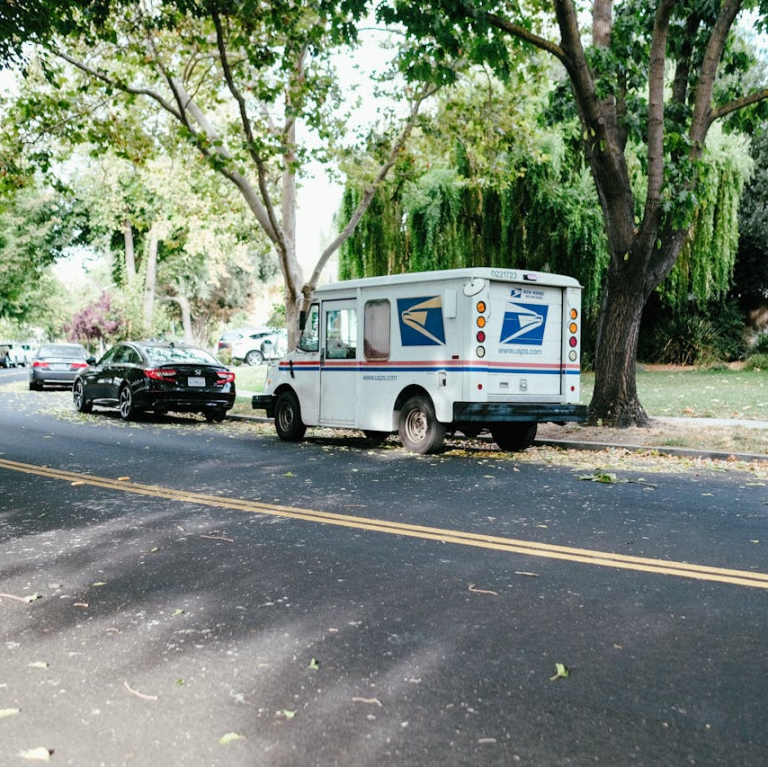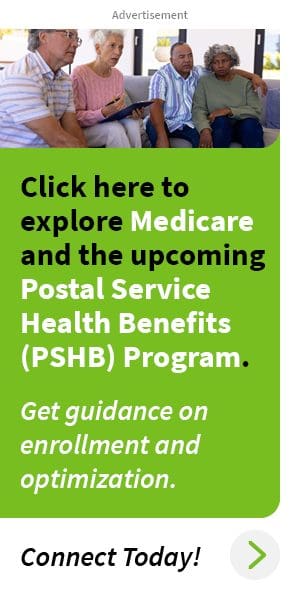Key Takeaways
-
Enrolling in Medicare when eligible is not optional if you want to keep your full PSHB benefits—it’s a requirement for many retirees.
-
Coordinating Medicare with your PSHB plan can reduce your out-of-pocket costs, but timing and plan rules make a big difference.
Medicare and PSHB: The New Retirement Reality
If you’re a Postal Service retiree or nearing retirement, you may be surprised to learn that Medicare plays a central role in how your Postal Service Health Benefits (PSHB) plan functions after age 65. While it might seem like a secondary or backup option at first, Medicare is now deeply embedded into your PSHB coverage—especially for those who are Medicare-eligible. Understanding the rules, timing, and financial impact of coordination between PSHB and Medicare is essential to maintaining comprehensive and affordable coverage.
Who Needs to Enroll in Medicare—and When?
Starting January 1, 2025, Medicare enrollment is mandatory for many annuitants and family members who are eligible for Medicare Part B. Specifically, you must enroll in Part B if:
-
You are a Postal Service annuitant eligible for Medicare,
-
Your covered family member is eligible for Medicare,
-
And you are not exempt based on age or retirement date.
Key Exemptions Include:
-
You retired on or before January 1, 2025, and are not enrolled in Medicare Part B.
-
You were an active Postal Service employee aged 64 or older as of January 1, 2025.
-
You live abroad or are covered by the Veterans Health Administration or Indian Health Service.
For everyone else, not enrolling in Medicare Part B will lead to a loss of drug coverage and reduced coordination benefits under PSHB.
Why PSHB and Medicare Work Better Together
When you’re enrolled in both Medicare and a PSHB plan, your coverage becomes more robust—and often more cost-effective. Here’s how the coordination typically works:
-
Medicare pays first, covering services like doctor visits, outpatient care, and preventive services.
-
Your PSHB plan pays second, often covering what Medicare doesn’t—such as deductibles, coinsurance, or copayments.
This combined coverage can significantly reduce your out-of-pocket expenses. Additionally, many PSHB plans waive or reduce deductibles and copays if you’re enrolled in Medicare Part B.
Prescription Drug Coverage: Big Changes You Can’t Ignore
Starting in 2025, all Medicare-eligible Postal retirees will receive prescription drug coverage through a Medicare Part D Employer Group Waiver Plan (EGWP), built directly into your PSHB plan.
Here’s what that means for you:
-
You’ll be automatically enrolled in this Part D plan as long as you enroll in Medicare Part B.
-
The annual out-of-pocket cap is $2,000, which is a major shift from the previous coverage phases and cost structure.
-
If you decline Part B, you will lose prescription drug coverage through PSHB.
This makes Medicare enrollment a financial and functional necessity, not just a formality.
Timing Your Enrollment Right
Failing to enroll in Medicare Part B during your Initial Enrollment Period (IEP) can lead to penalties and gaps in coverage. Your IEP spans seven months:
-
Three months before your 65th birthday,
-
The month of your birthday,
-
And three months after your birthday month.
If you miss this window, you’ll have to wait until the General Enrollment Period (January 1 to March 31), and your coverage will begin in July—with a permanent late enrollment penalty.
Special Enrollment Period (SEP)
There was a one-time SEP for Medicare-eligible Postal retirees from April 1 to September 30, 2024. That opportunity has passed, so now you must follow standard Medicare enrollment rules.
Financial Impact of Coordination
When you’re enrolled in both Medicare and PSHB, the savings can be substantial—but only if you follow through with proper enrollment. Here’s what changes:
-
Lower out-of-pocket costs for doctor visits, hospital stays, and prescriptions.
-
Access to a wider network of providers who accept Medicare.
-
Enhanced cost-sharing protections, such as waived deductibles and reduced coinsurance.
Some PSHB plans may even offer partial reimbursement for your Medicare Part B premiums, though the specifics vary.
If You Don’t Enroll in Medicare
Failing to enroll in Medicare Part B has consequences that extend beyond just missing extra coverage. Here’s what could happen:
-
You will lose prescription drug coverage through PSHB.
-
Your PSHB plan will operate as the primary payer, potentially leading to higher deductibles and out-of-pocket costs.
-
You won’t qualify for cost-sharing reductions available only to those with Medicare.
This could leave you paying more for less coverage.
What About Medicare Part A?
Medicare Part A (Hospital Insurance) is typically premium-free if you or your spouse paid Medicare taxes for at least 40 quarters. While not mandatory under PSHB rules, most retirees enroll in Part A at 65 since it covers:
-
Inpatient hospital stays,
-
Skilled nursing facility care,
-
Hospice care,
-
And some home health care services.
Enrolling in Part A can further reduce your inpatient care costs when paired with PSHB.
Medicare Advantage Is Not the Same as PSHB
It’s important to understand that PSHB is not a Medicare Advantage (Part C) plan. PSHB plans are federal employee health benefits that can coordinate with Original Medicare, but you’re not switching over to a private Medicare Advantage plan.
This distinction matters:
-
You keep your federal benefits and continue through the Office of Personnel Management (OPM).
-
You don’t give up control to a private plan.
-
Your drug coverage comes from PSHB’s integrated Part D plan, not from an external carrier.
Reviewing Your Plan Annually
Each year from November to December, the PSHB Open Season gives you a chance to review your plan options and make changes. During this period, it’s important to:
-
Check whether your current plan coordinates well with Medicare.
-
Review any updates in your plan’s cost-sharing, premium rates, or provider networks.
-
Confirm that your plan still includes the benefits you rely on.
Failing to review your plan could result in surprise costs or lost benefits—especially if your health needs have changed.
Myths That Can Lead to Costly Mistakes
There’s a lot of misinformation circulating among retirees. Here are three key myths to avoid:
-
“I don’t need Medicare if I have PSHB.” Wrong. In 2025, Medicare Part B enrollment is required to keep full PSHB benefits if you’re eligible.
-
“Medicare is just a backup—I won’t use it.” Incorrect. Medicare becomes your primary payer once you enroll, dramatically affecting what you’ll pay.
-
“I’ll save money by skipping Medicare.” Short-term savings could cost you thousands later through penalties, higher medical bills, and loss of prescription coverage.
How to Check If You’re Required to Enroll
If you’re unsure whether Medicare enrollment applies to you, consider these steps:
-
Check your retirement date: If you retired after January 1, 2025, you likely must enroll.
-
Review your age: If you’re turning 65 or already over 65, look at your current Medicare status.
-
Contact OPM or a licensed agent listed on this website to verify your eligibility and requirements.
Staying Covered the Smart Way
As a Postal retiree, your health benefits are not automatically set in stone. Medicare is a required and strategic piece of your overall healthcare picture. Understanding what’s required—and taking action at the right time—can protect both your health and your finances.
Don’t Risk Losing Benefits—Get Expert Help
The rules around PSHB and Medicare can seem complicated, but they don’t have to be overwhelming. What matters most is that you act early, enroll when required, and stay informed about your plan’s specific coordination rules. If you need help making sure you’re doing it right, speak with a licensed agent listed on this website. They can review your eligibility, timelines, and coverage options so you avoid costly mistakes.











